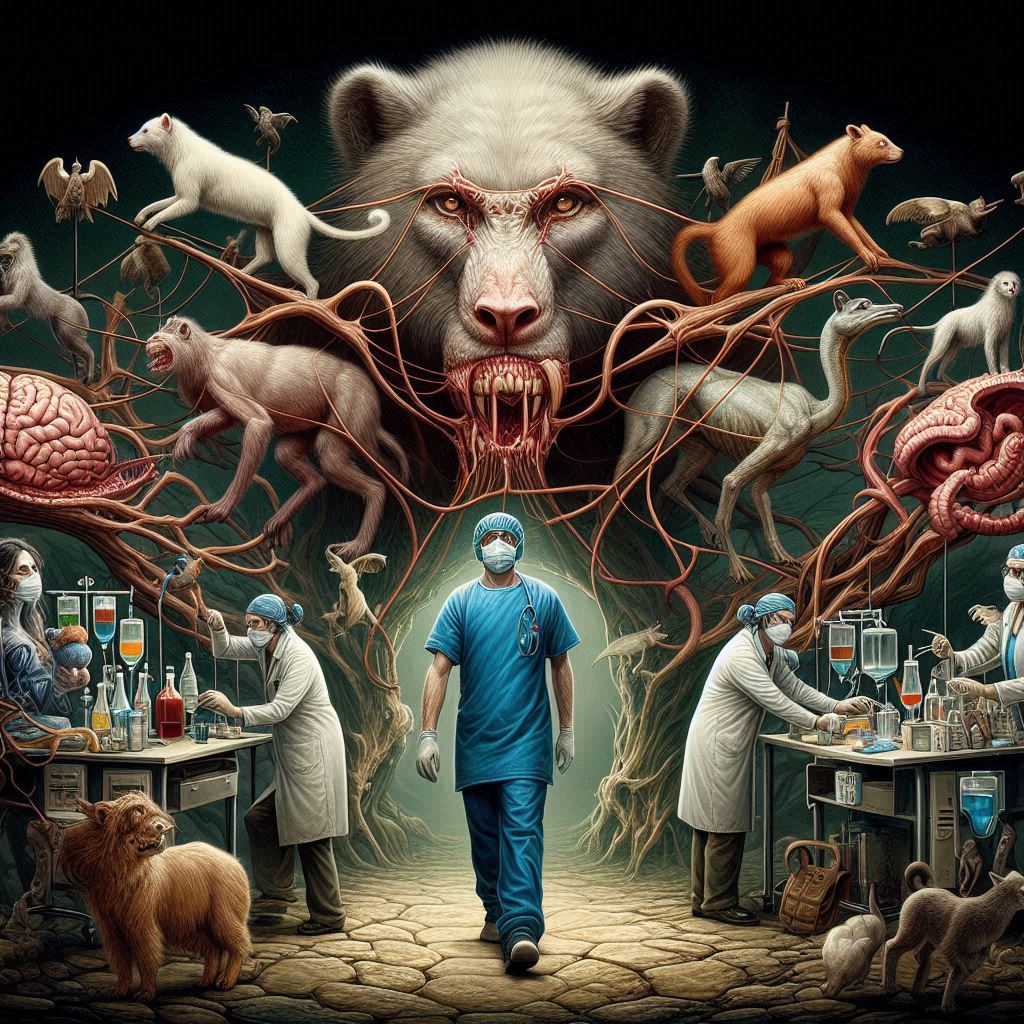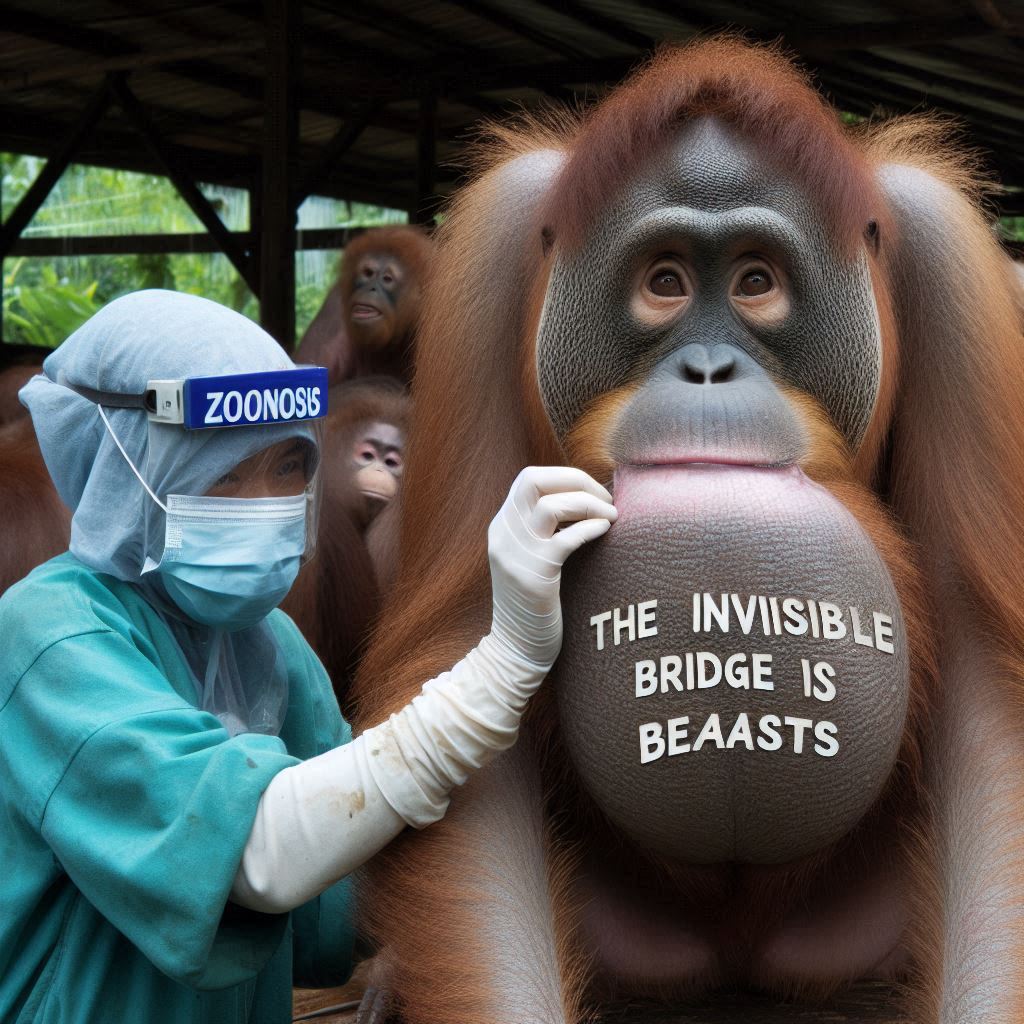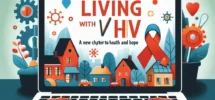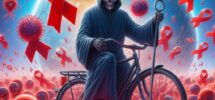In the ancient forest of life, there are paths we rarely see — invisible bridges that connect the animal world to our own. One of the most mysterious and dangerous of these is called zoonosis — the silent passage through which viruses cross the species barrier. It is the spark that lights the match. And if we truly want to answer the question “AIDS: where did it come from?”, we must begin with this shadowy biological phenomenon.

Zoonosis: The Hidden Doorway of Infection
Imagine a locked door between animals and humans. Most of the time, that door stays closed. But sometimes — due to injury, hunger, or human expansion — the lock loosens. Through that crack, a virus peeks in. Zoonosis is the moment that virus slips across the threshold.
It is not dramatic. There is no lightning or thunder. Often, it happens with a single drop of blood, a single cut on a hunter’s hand, a single bite, or the act of butchering an infected animal. In that fleeting moment, something ancient and wild leaps into a new world — from animal to human — adapting, mutating, and beginning a new story.
That’s exactly how the virus known as SIV (Simian Immunodeficiency Virus) crossed into humans and eventually became HIV, leading to the global pandemic we now know as AIDS.

AIDS: Where Did It Come From? Follow the Zoonotic Trail
To answer the haunting question “AIDS: where did it come from?”, scientists had to become detectives of nature. Their trail led back to Central and West Africa, where hunters had for generations interacted with wild primates — chimpanzees and sooty mangabeys — sometimes for food, sometimes for survival.
In those dense green forests, zoonosis occurred quietly, likely multiple times. A virus that had lived for centuries in harmony with monkeys, doing little harm, suddenly entered a human host. There, in new cells and unfamiliar immune defenses, the virus began to change. It became HIV-1 and HIV-2, both of which eventually caused AIDS (Acquired Immunodeficiency Syndrome) in humans.
Zoonosis: Nature’s Risky Experiment
Zoonosis is not unique to HIV. Many major diseases we know today — Ebola, SARS, COVID-19, avian flu, swine flu — all originated from zoonotic events. It is nature’s dangerous experiment — a game of viral roulette where one mutation can change the course of history.
But with HIV and AIDS, the consequences were especially devastating. Once HIV entered the human population, it adapted rapidly. It learned how to evade the immune system, how to spread through blood and sexual contact, and how to hide for years before symptoms appeared. By the time the world noticed in the 1980s, the virus had already circled the globe.
So again we ask: AIDS — where did it come from? From a forest. From a monkey. From a silent leap. From zoonosis.
The Human Role in Zoonosis
It’s important to understand that zoonosis doesn’t just happen on its own. Human activity plays a critical role.
- Deforestation pushes humans closer to wildlife habitats.
- Hunting and consuming wild animals increases exposure.
- Global travel spreads viruses faster than ever.
In many ways, zoonosis is the price of proximity — the biological cost of shrinking the distance between wild and urban worlds.
The Invisible Threat that Still Lurks
Even today, zoonosis remains a threat. New viruses are waiting in the wings. And the story of AIDS — and where it came from — serves as a warning. The next pandemic could be born the same way: from a harmless virus in an animal, passed through a wound, and suddenly evolving into a global crisis.
Zoonosis and the Origins of AIDS
If HIV was the fire, zoonosis was the matchstick. It is the first, hidden step in a chain of events that led to one of the deadliest pandemics in human history. To truly understand “AIDS: where did it come from?”, we must look not just at viruses, but at the bridges we unknowingly build with nature — and the quiet, dangerous crossings that follow.
Let zoonosis be a lesson: the more we encroach upon the wild, the closer we walk to the edge of another outbreak.


